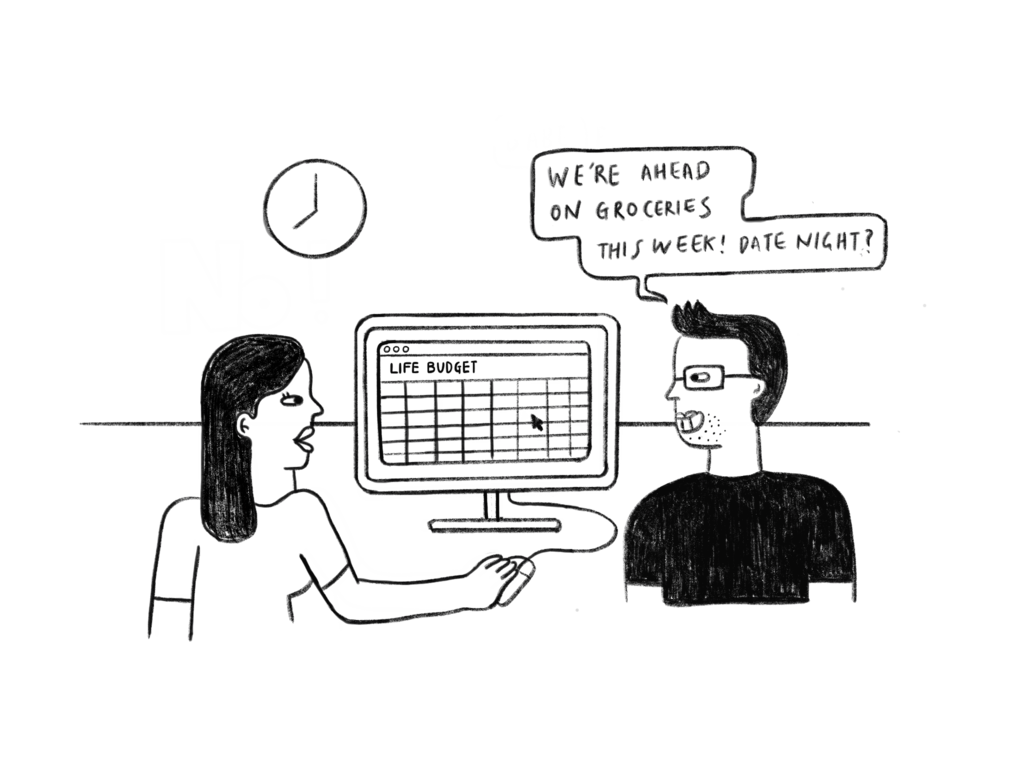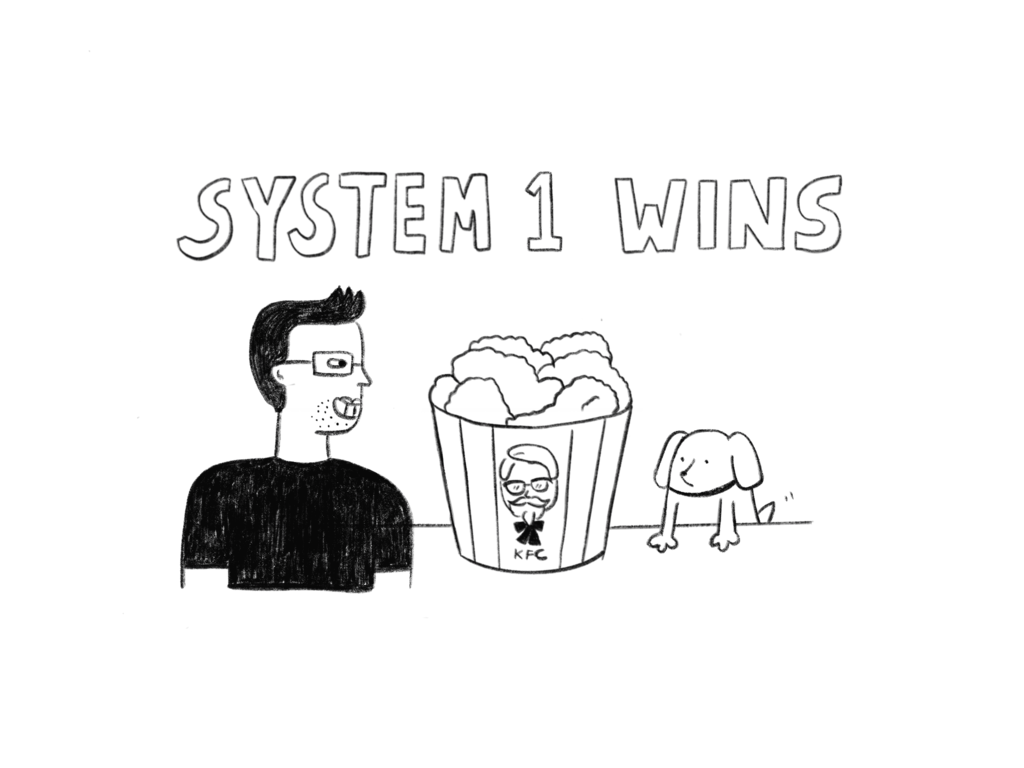Why it's hard making good spending decisions - pt 1
This is part 1 of my 2-part summary of my recent talk at the launch of IxDA Brisbane. Illustrations by the supremely talented Annie Lee @thesidewalks.co.
The planners
My wife and I have our budget on a spreadsheet that we revisit every 6 months. It’s helped us save for a home deposit and plan for our growing family expenses. I’m pretty proud of it.
Admittedly, I can’t take credit for the detailed breakdown of our household expenses, nor the formulas that break down our allocations. First spending tip - find a good partner.
When pay day arrives, my salary is automatically transferred into other accounts based on our spreadsheet. Three of these accounts are for discretionary spending - our ‘splurge’ buckets - we stay on top of them to keep within our allocated budget.
This intervention really helps to curb our spending, since it’s easy to track and pretty salient. It works - most of the time.
Where the plan goes wrong
Meet our nemesis, the humble bucket of fried chicken.
Despite our best plans, we rarely turn away the chance to say hi to the Colonel. If we’re low on our allocated ‘splurge’ balance, we use creative mental accounting to justify our choice.
‘Oh, we spent less than what we had planned for groceries this week’. ‘It’s been a long week, we deserve a treat!’ Sometimes I keep it simple - ‘#YOLO’.
This scenario might seem trivial, and indeed this cheeky ‘mistake’ doesn’t impact our saving plans as we employ enough buffer in our budget.
But what if we were in financial hardship? What if we replace the bucket of fried chicken with a small gambling habit?
If I’m a machine, mistakes from executing a budget like this would simply not happen.
But I’m not a machine, I’m human. And what I plan is often not what I do.
So what’s going on?
In his book ‘Thinking, Fast and Slow’, Daniel Kahneman, a Nobel-prize-winning psychologist argues that we have 2 systems that determine how we think and make decisions.
There are risks when we trust blindly or rely too much on our ‘fast thinking’ system when making important choices. This can get us in trouble.
Let’s take a brief look at these 2 systems.
System 1 - Fast Thinking
System 1 is intuitive, automatic. It’s your ‘gut instinct’, impulsive, reactive. It works automatically with little or no effort - you can’t turn it off.
System 1 is key to our survival in an evolutionary context, as it allows us to quickly respond to complex situations correctly, most of the time. It’s our fight or flight response, which has remained relatively unchanged over millennia.
This autonomous system allows us to use language to communicate with low cognitive effort, respond when something feels abnormal (e.g. twig snapping), and enables us to become experts with training.
Take driving for instance. When we first learn to drive, it can feel overwhelming with the amount of information (signs, traffic, signals) we need to process while coordinating the adjustment our body needs to make.
Over time, it becomes second nature as your System 1 takes over, to the point where you can listen to an audiobook or have meaningful conversations with your fellow passengers while driving.
System 2 - Slow Thinking
System 2 is reflective, manual. It’s your planner and thinker. System 2 is deliberate, conscious, controlled and therefore rational.
We like to believe System 2 represents who we are, and it’s exactly the system we want to engage when making important decisions.
We engage this system when we write essays, plan budgets or perform arithmetic calculations.
However, System 2 requires cognitive effort and energy, sometimes a lot of it. Therefore it’s slow and lazy.
So while it’s clear that we should always use System 2 to make important decisions like spending, this doesn’t always happen.
The real hero
In reality, even though you should engage System 2 when making important decisions, System 1 is often the hero.
“In the unlikely event of this book being made into a film, System 2 would be a supporting character who believes himself to be the hero.”
Daniel Kahneman - Thinking, Fast and Slow
There are a few reasons behind this irrationality. Why don’t we engage System 2 for all spending decisions?
Law of least effort
As humans, we’ve evolved over millennia to be efficient. This is helpful, especially when you’re not sure where your next meal is coming from. Relative to our history, it’s only been (very) recently where we have easy access to good nutrition and healthcare and live in relatively peaceful times.
Because System 1 has the ability to respond to complex situations with minimal energy, there’s little reason to engage System 2 when we don’t need to (more accurately, we assume we don’t need to).
Ego depletion
In situations where you’re low on energy, it’s even harder to trigger the lazy System 2. Not impossible, especially with the right incentives, but certainly challenging.
This is why many of us find it easier to be productive or make better decisions earlier in the day than late in the evening.
Cognitive limits and biases
Finally, as humans, we have limits to our cognitive abilities. These limits are the playground where System 1 thrives.
To be continued in part 2
In part 2 - I’ll cover some of our limits and biases in the context of spending, and conclude with some tips on how we might overcome our reliance on System 1 as designers.
Thanks for reading!





